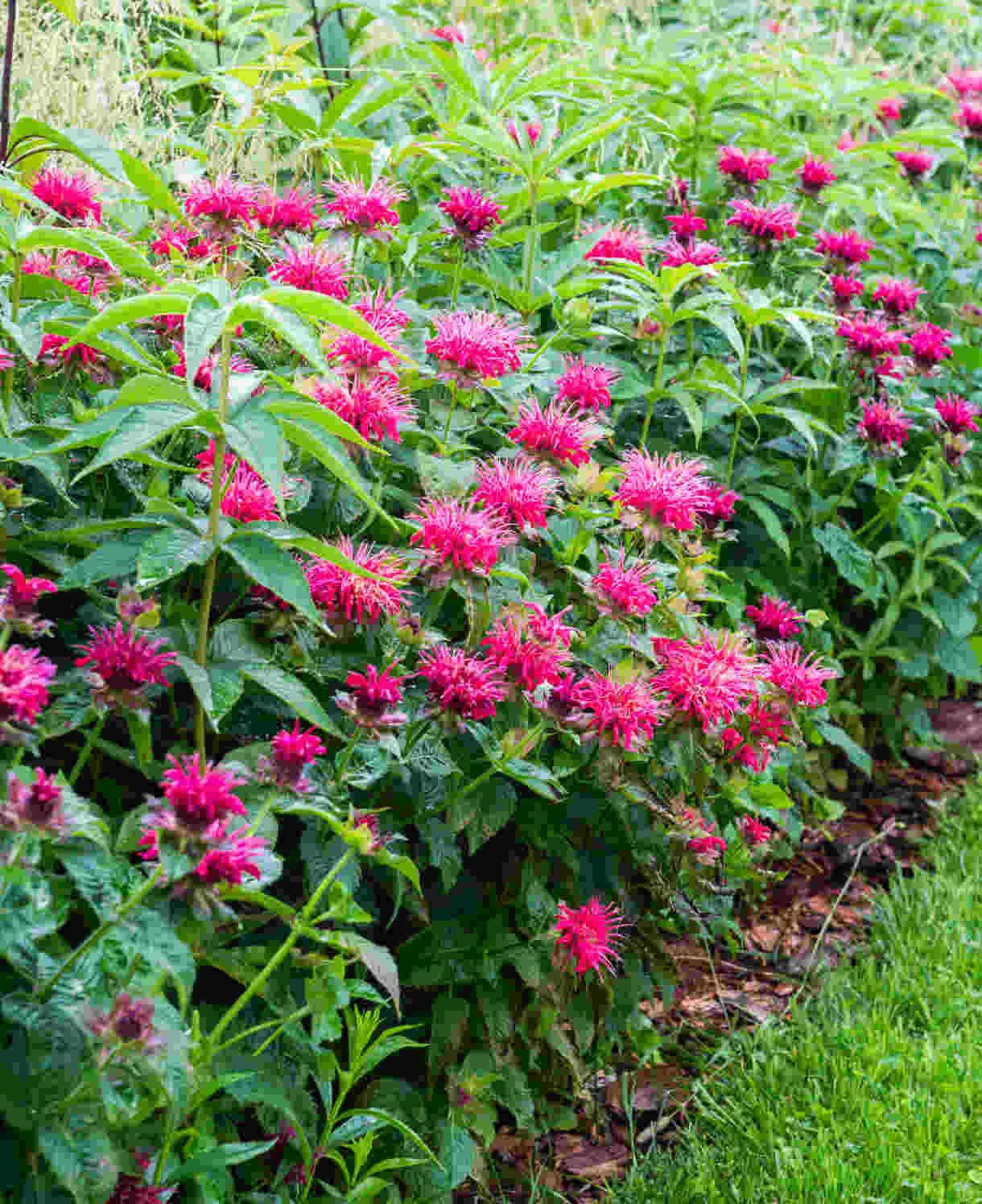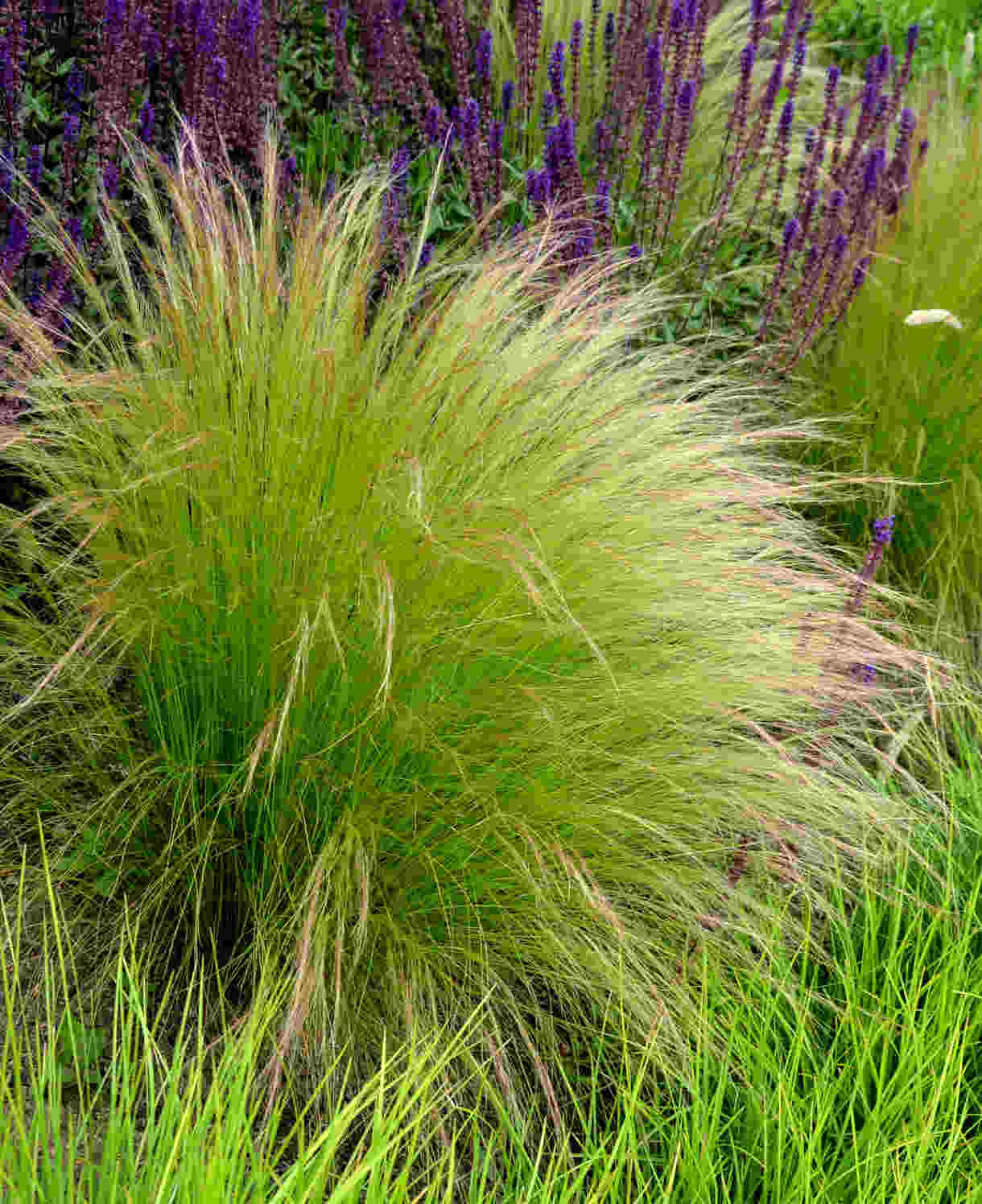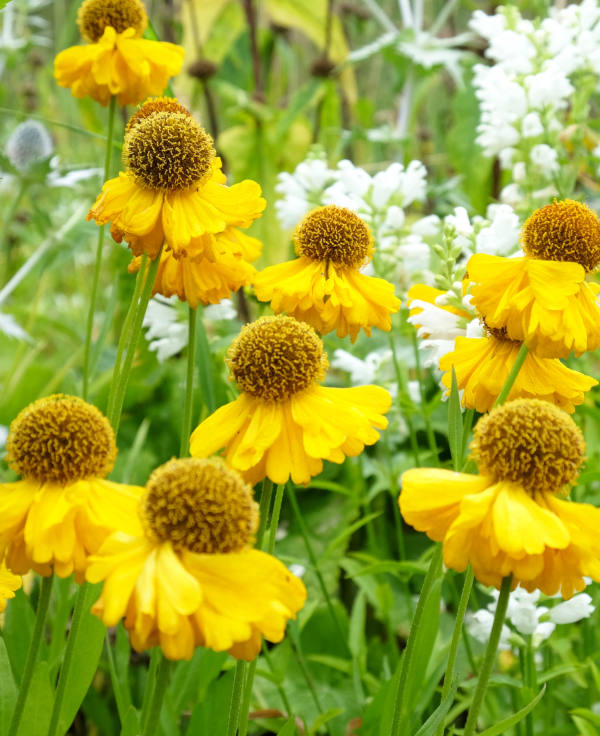How to grow Helenium
Originally hailing from damp meadows and woodland margins throughout North and Central America, this sunflower-relative has become a much-loved garden plant. Its widespread popularity is down to a fantastically tough, undemanding nature and abundance of fiery coloured flowers produced over a long period from midsummer into autumn. Held on sturdy, branching stems, these daisy-like blooms are distinctive for their prominent centres (which appear to protrude more with age as the petals curve backwards), often with a surrounding ring of yellow, bronze, orange, or red.
Helenium is also sometimes known by the common name of sneezeweed, due to its leaves once being used to make snuff.

Zantedeschia is a genus of flowering plants from the family Araceae and is native to southern Africa. With a rich history dating back to the Ancient Romans, these deciduous or semi-evergreen perennials have been used as a symbol of celebration. Zantedeschia was Named after Professor Giovanni Zantedeschia, an Italian botanist.
There are two main forms of Zantedeschia: hardy and tender. Hardy forms of the plant can be grown outdoors, enjoy moist soil and full sun or partially shaded conditions - these are known as Arum lilies. Tender forms of Zantedeschia prefer being grown in containers or pots and should be brought inside over the winter - these are known as Calla lilies.
With tuberous flora in all colours from whites, yellows and oranges to deep reds and purples, Zantedeschias are not to be overlooked in any garden, as long as they have sufficient sunlight to grow in.
Ready to learn more about growing Zantedeschia? Read on for all there is to know...

Key Information
Soil pH
Position
Hardiness


Where & when to plant Helenium
Position- For best results choose a spot in full sun. Partial shade will be tolerated, though is likely to result in fewer flowers.
Soil- Any moist, well-draining soil (helenium is unfussy on soil pH). Avoid heavy wet soil, or anywhere prone to summer drought
Flowering Period- Midsummer to autumn
Hardiness- Very hardy; rated H6 (-15°C to -20°C), or H7 (-20°C and beyond) depending on the species or cultivar
For best results, plant pot-grown helenium in autumn or spring. An autumn planting can be done by those gardening in mild conditions (and broadly speaking, this is the southern half of the UK). For those liable to cold winters, it is best to wait until spring (generally the northern half of the UK). Planting can also be carried out in summer, though be prepared to water regularly.
Some helenium are available as bare roots during their dormant period. For best results, we recommend these be potted up as soon as they arrive, grown on in a coldframe or unheated greenhouse, then hardened off and planted out in spring once they have put on some growth. If frost-free growing space isn’t an option, another method is to plant the bareroots into open ground as soon as they arrive with a nice, thick layer of mulch.
Helenium is best seen planted in drifts in a sunny border and goes particularly well in a prairie-style design or hot colour scheme. Most varieties grow quite tall and are therefore not suited to a container. For this, instead try some of the shorter, dwarf varieties such as Helenium ‘Short and Sassy’, H. ‘Salud Embers’, or H. ‘Salud Gold’.
How to plant Helenium
- For planting in the garden, dig the soil area removing any large stones and weeds and breaking up any lumps. Mix in some organic matter such as manure or garden compost. If your soil is on the heavy, damp side, now is also the time to add a generous helping of horticultural grit. Rake level and firm with your heels. Rake level again.
- Water plants well and allow to drain before planting.
- A good tip is to dig a hole twice the size of the root-ball. Fill with water and allow to drain before placing in the plant.
- Place the plant in the hole, ensuring the top of the root ball sits level with the surface of the soil. Too low and the plant may rot, too high and the roots can dry out.
- Backfill with soil and firm in gently with your foot.
- Soak well with water.
- Mulch around the base with well-rotted organic matter.
- For planting in containers (remember – we recommend using dwarf varieties for this), first choose an appropriately sized pot. You may wish to grow your helenium on its own in a pot just a few centimetres larger than the rootball, or as part of a larger, mixed container display. Either way, ensure there are plenty of drainage holes in the bottom.
- If you are using a large or heavy pot, it can be a good idea to fill and plant it in situ to save yourself the trouble of moving once full.
- Use a good quality potting compost with plenty of horticultural grit mixed in, and, if not already present in the compost (check the description on the bag) some slow-release fertiliser granules.
- Start by partially filling the pot with compost; enough so that when placed on it the upper surface of the root ball is about 3cm lower than the top of the pot.
- Infill all the space surrounding the root ball with compost, firming down with your fingers then adding a little more so the plant is held tight.
- Pick up the container and lightly tap on the potting bench or ground a few times to help further settle the compost around the plant.
- Soak well with water.
- A mulch with horticultural grit will look attractive and help to prevent a ‘cap’ or crust forming on the top of the compost (something container plants can suffer due to the artificial nature of their watering).

What to plant with Helenium
For the classic, naturalistic, prairie-style look, helenium pairs beautifully with ornamental grasses and other statuesque, late-flowering perennials such as aster, echinacea, rudbeckia, coreopsis, kniphofia, monarda, and veronica.



How to care for Helenium
Pruning and Deadheading
Helenium is a good candidate for the ‘Chelsea chop’, i.e., cutting the whole plant back by a third to a half in late May. While this delays flowering for a couple of weeks, it results in a stouter, bushier plant that is far less likely to require staking. Without this treatment, most of the taller helenium varieties need support to prevent flopping (especially in exposed conditions).
Deadhead regularly during the flowering period to prolong blooming, or even better – pick flowers to enjoy indoors (their strong stems and impressive vase-life make for excellent cut flowers).
Cut the whole plant back once flowering has finished. It will regrow in spring.
Watering
New plantings require more watering than established plants. During the first growing season in the ground, a good soaking every couple of weeks should ensure long-term success (aiming for consistently moist, but not soggy soil). After this, helenium needs little watering other than in hot, dry conditions. It is important that helenium is not allowed to dry out in summer, so do remember to keep an eye on this. An annual mulch will help lock moisture into the soil (see also ‘Feeding’ section below).
Container-grown helenium needs to be watered regularly throughout every growing season. Allowing the top couple of centimetres of compost to dry out between watering is a useful rule of thumb to help avoid overwatering. Use your finger inserted into the compost to check. From mid-autumn, the British climate tends to take over watering needs, though do remember to step in in the event of an unseasonably dry spell.
Feeding
On healthy, fertile soil, an annual mulch of well-rotted organic matter (i.e., a layer of manure or garden compost applied to the soil around the plant) should provide sufficient nutrients for your helenium. This has the added benefit of suppressing weeds and locking in moisture. Autumn or spring are the best times to mulch.
If your plant looks in need of an extra boost or you garden on poor soil, applying a general purpose granular feed to the surface of the soil and lightly working in (known as a ‘top dress’) can reap benefits. Aim to do this in spring, and then again in midsummer if needed.
Permanently container-grown plants rely more on the gardener for nutrition. Get off to a flying start by making sure you use a good quality compost, then throughout the growing season (March to September) apply a liquid feed at regular intervals according to its instructions. Alternatively, top dress with a general purpose granular feed every three months throughout the growing season.
Cold Protection
Helenium is fully hardy and able to withstand even a very cold UK winter without the need for additional protection.
Like all plants, those grown in containers can be more vulnerable to the cold. In the event of extremely low temperatures, it can be worth wrapping pots with hessian or fleece (this will protect the pot from cracking too).
Pests and Diseases
Helenium tends to be problem-free apart from a fungal disease called leaf spot. As well as looking unsightly, this can reduce the vigour of the plant. The best practice if you see this is to remove and destroy any affected plant material immediately.
As always, prevention is better than cure, which means taking a little extra effort to grow healthy, robust plants. Choosing a sunny, well-draining spot, mulching annually, and never letting the soil dry out should encourage your helenium to thrive and, in doing so, be less vulnerable to infection.
How to propagate Helenium
The speediest way to propagate helenium is by lifting and dividing established plants in autumn or spring. As well as providing new plants this is recommended as a routine maintenance practice, done every 2 to 3 years to maintain the vigour of existing clumps.
- Choose a day when the soil is not frozen or waterlogged.
- Dig the plant out of the ground.
- Shake off any excess soil.
- Separate the plant into sections using either swift, cutting blows with a sharp spade, or two forks inserted back-to-back with tines touching, handles then pushed together to prise the plant apart.
- Discard old, damaged, or surplus pieces, keeping healthy, vigorous material.
- Replant decent-sized pieces where desired, and any smaller bits can be potted up.
- Water well until fully established.
* Many plants carry Plant Breeders Rights and cannot be propagated for commercial purposes.
Common Helenium questions
- Is helenium easy to grow?
Given the right conditions (i.e., plenty of sun, and reasonable soil which doesn’t waterlog or dry out), helenium is fantastically easy to grow. With its tough and undemanding yet hugely floriferous nature, it is often recommended as a starter plant for beginners. - Does helenium come back every year?
While annual and biennial species of helenium do exist, all our helenium are perennial. This means they die back in winter and reappear each spring. It is highly unlikely that they will be damaged by cold temperatures due to their ultra hardiness, though it is worth noting that waterlogged soil can have an impact on winter survival. - Is helenium hardy?
Yes, helenium is fully hardy and should have no trouble surviving UK winter temperatures.
- Is helenium poisonous?
All parts of this plant can cause severe discomfort if ingested.





